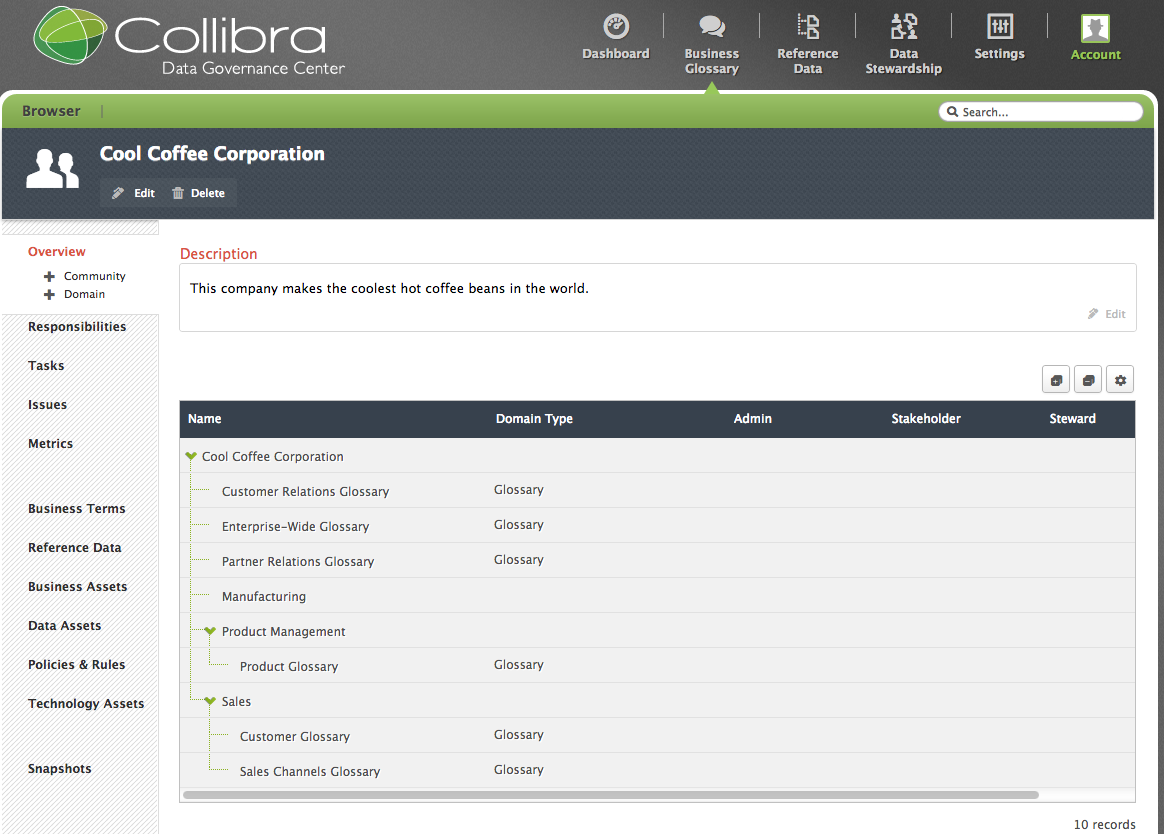How to Scope a Glossary?
Instead of creating one single Glossary Domain and assigning Resource Roles globally, it is advised to take a step back and think about the following two questions to make your glossaries more manageable:
- What are the knowledge areas you would like to capture in the organisation. Taking the whole organisation into consideration, you will realise quickly that you enter in to a scaling problem.
- Firstly, there may be far too many subject areas with thousands of Business Terms and/or Acronyms to fit one single Glossary. So consider creating one Glossary per subject area.
- Secondly, assigning Resource Roles to such a all-in-one glossary will distract stewards and experts from their core tasks. So, take a divide-and-conquer approach to the governance of you Glossaries, that is, group your subject matter experts per Glossary, avoiding them to get lost in subject areas they do not master.
- Glossary content is characterised by naming conflicts such as Business Terms that are polysemous (one word = many meanings; e.g., “account”) or synonymous (many words have one single meaning; e.g., “client” and “customer”).
- What are the different levels of agreement you would like to achieve. Structuring the content and governance of your enterprise Glossary vertically per subject area is an important first step. Yet some parts of the glossary are only relevant locally in a number of units, while others have to be used consistently for communications within and outside the organisation. So consider to
- introduce an horizontal layered structure of your Glossary in different (local versus global) levels of agreement.
- introduce mechanisms to promote or degrade glossary assets (Business Terms , Acronyms and KPIs) between these levels (See further down to learn more about
How to promote local departmental glossaries to the global enterprise level ?)
For example, consider the following screenshot from DGC modelling the glossaries according to subject and agreement level in a fictional manufacturing company “Cool Coffee Inc.” The company is structured into three main departments (hence Communities ): Sales, Product Management, and Manufacturing. The Product Management Community manages a Product Glossary and the Sales Community manages its Customer Glossary and Sales Channels Glossary . On the top level there are three Glossaries: the Enterprise-wide Glossary contains a selection of Business Terms , Acronyms and KPIs to be governed globally (see
How to promote local departmental glossaries to the global enterprise level ?
) .
This Corporate Glossary can be further divided into a Customer Glossary and a Partner Glossary , selecting relevant corporate Glossary assets to be governed and consistently used in communication with customers and partners .

You have to login to comment.

